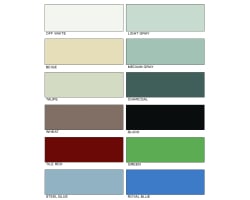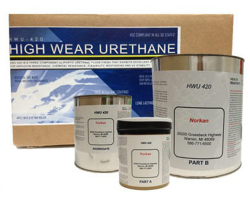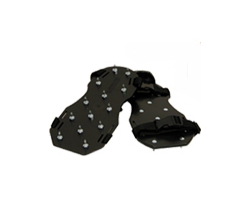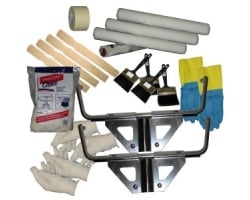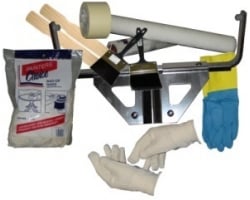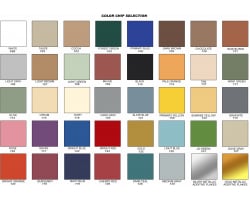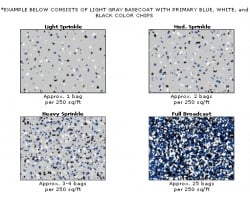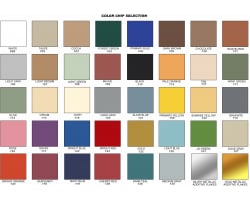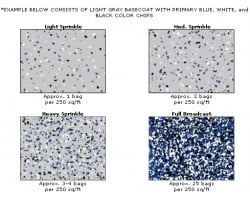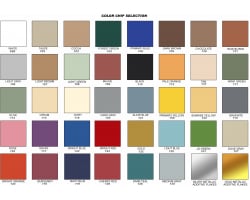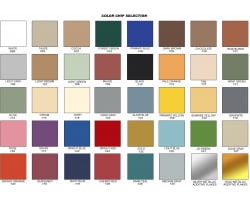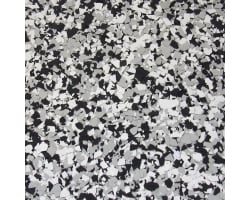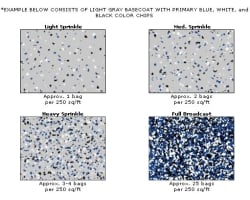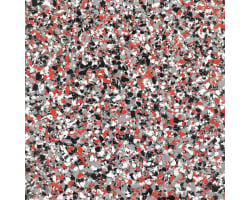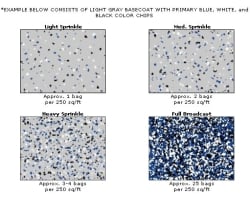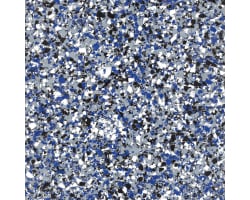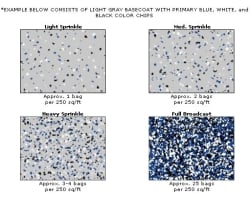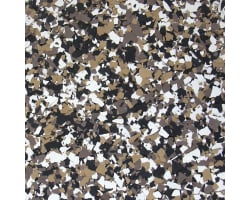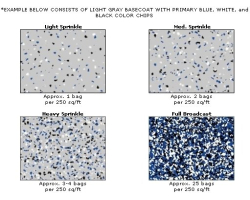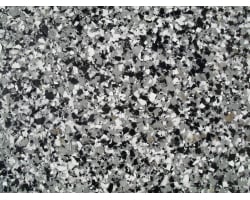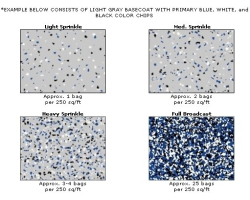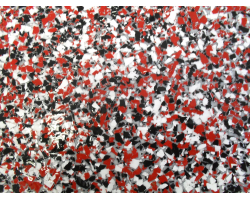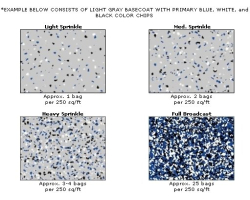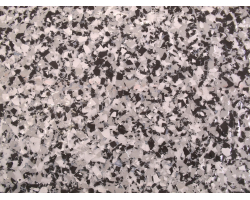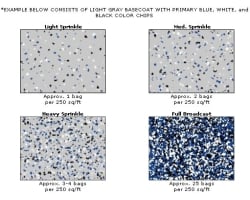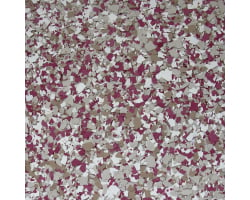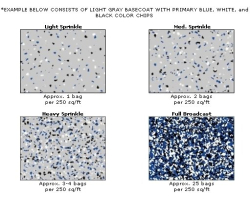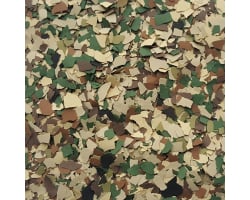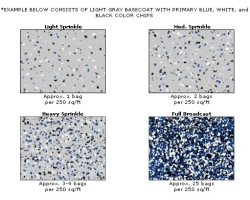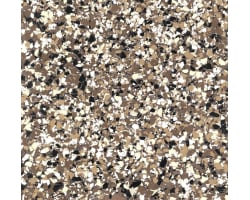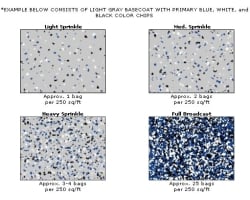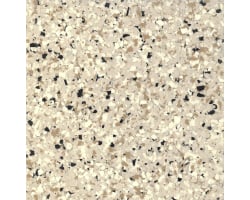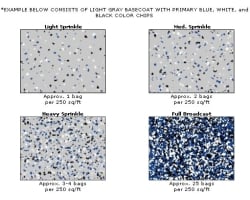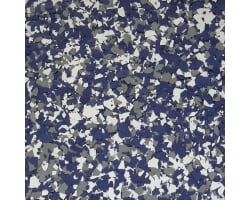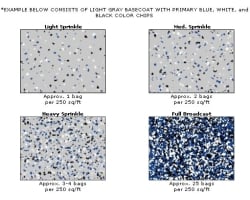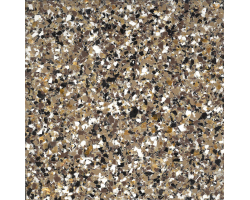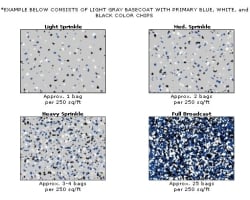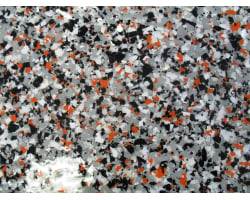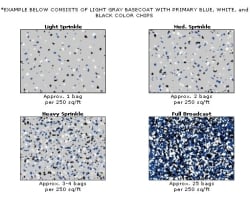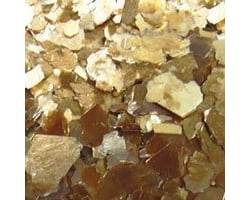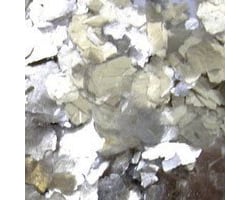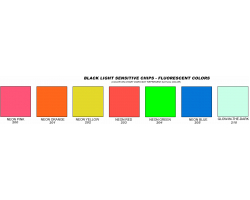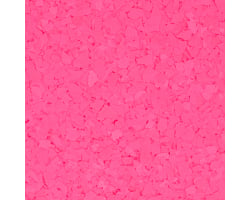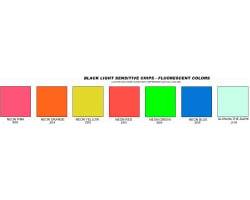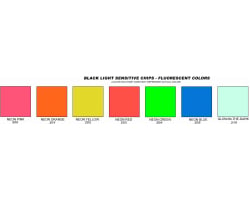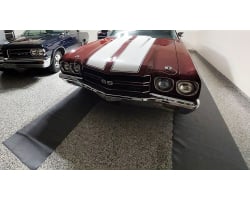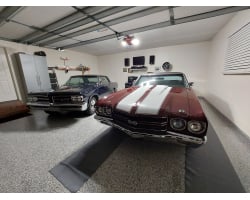Applying an epoxy floor in your garage will make a huge difference not only in the way it looks but in its usability and durability. Car Guy Garage carries a commercial grade 100% solids epoxy that you won’t find at a local hardware store. Let’s go through all the steps with the proper tools to get the job done right so your floor will last for decades.
Before you begin the process of applying the epoxy you need to take inventory of everything that has been delivered to you. There are usually multiple boxes which may have been shipped from multiple locations. So although you may have received a shipment, there may still be more on the way to you. Open up all the boxes and organize the chemicals so that you have each set of chemicals arranged for each step. Arrange the bottles of etch-and-clean first. Second, arrange the cans of primer with the base and converter cans next to each other. Third, put the epoxy cans "A" and "B" next to each other. And finally organize the topcoat putting the "A" "B" and "C" cans next to each other. This way you can make sure everything was delivered before you begin.
Let's go through all the steps to apply this commercial grade 100% solids epoxy to your floor.
Step 1: Grind the floor
This is an important step that no one should skip, even if you have new concrete. You need a rough surface on the concrete so that the epoxy has something to grab. It should look similar to 100 grit sandpaper. You need to contact a local tool rental or hardware store to rent a floor grinder. Floor grinders either use water from a garden hose or suction from a vacuum to keep the dust down. You plug the machine in and walk it up and down the floor similar to walking a lawnmower. The hardest part about the floor grinder is getting it to your garage from the rental location. These are usually bulky machines but they are typically easy to operate.
Step 2: Etch and clean
The first chemical you use from the Car Guy Garage kits is etch and clean. This is a phosphoric acid solution that removes contaminants from the concrete. Pour it onto the concrete and use a stiff bristle brush to give the floor a good scrubbing. This acid should only have contact with the concrete for a maximum of ten minutes. Triple rinse it thoroughly with water (power washing is ideal) and allow the floor to dry a minimum of eight to ten hours before moving to the next step.
Step 3: Primer and Sealer
The next chemical you’ll be using does a couple things: it provides a primer bonding coat and seals the concrete from air and or moisture coming from under the slab.
You'll mix together part "A" and part "B" in a 5 gallon bucket. First empty all of part "A" into the bucket and slowly add part "B" while you are mixing. Once the two components are thoroughly mixed you have about 50 to 70 minutes to use it before it becomes too hard.
It is best to use a three-eighths inch nap roller and a brush to cut in the edges. Start with the area furthest from the exit door and work your way toward the door. It has a very low viscosity so it’s easy to put down. One gallon will cover two-hundred-and-fifty square feet. It should be applied in one even coat to completely cover and penetrate the surface. The finished look will depend on how porous the concrete is, the more porous the more textured it will appear.
Wait until you can walk on it (generally 7 to 10 hours) before you move to the next step. Application thickness and cooler temperatures can extend this time, so make sure it's completely dry before moving on.
Step 4: Apply the Epoxy
This step is time sensitive because once you mix these chemicals together they will begin to harden quickly. They will also harden faster if they stay as one mass in the mixing bucket, so follow the instructions you’ll later see about pouring the epoxy onto the floor in ribbons to give you the most amount of working time. At 70 degrees Fahrenheit, you only have a 20 to 30 minute window to complete this step. The warmer the temperature, the quicker these chemicals will harden. If it's 90 degrees outside you'll only have a few minutes.
Do not start this step if anything is wet, it’s raining, or it’s very humid. You do not want condensation to settle on the epoxy coating during the application or curing process.
Let’s get started. First mark off 150 square foot sections on your floor. Because each 100% solids epoxy set covers 150 square feet, this gives you boundaries for how far one mixed set of epoxy should spread. You can use chalk on the primer coat to mark sections off. Optionally, if you are applying colored paint chips to the epoxy, divide your paint chips to match the amount of 150 square foot sections. This can be done with plastic bags, or cups, so that you have a roughly equal amount of paint chips to spread over each section.
Next create a mixing station where your cans of epoxy can be mixed. Put down a drop cloth, then organize and open all the epoxy cans. An important step often overlooked is mixing each of the cans individually before you mix them together. The chemicals will not harden without their other part, so do a good job of mixing them individually. Once all the cans have been individually mixed, it's time to prepare for what's going to be a time sensitive process.
Put on your spiked shoes so you’re ready to move once things are mixed together. Remember to tighten all the screws on the spiked shoes before you put them on.
This epoxy comes as 1 gal of part "A" (the resin) and a half gallon of part "B" (the hardener). They are in pre-measured kits and should be mixed as supplied in the kit. Pour both part "A" and "B" into a five gallon bucket. Mix them well by hand or with slow speed mixing equipment until the material is thoroughly mixed and streak free. It's very important it's mixed extremely well, but do not whip air into it. Make sure you scrape the bottom and the sides of the containers. Note that most pigments create a swirl pattern in the material even after it is completely mixed. You just don’t want to see any clear streaks.
After mixing, transfer the mixed material to another five gallon bucket, and mix it again. Once it's been mixed in the second bucket, it's ready to be applied. You are now under a time crunch because in 30 minutes or less this mixture will become hard.
The mixed material can be applied by brush, roller or a serrated squeegee and then back rolled. Begin by painting in the corner furthest away from the exit of the room. Pour a small portion around the edges of the 150 square foot section you will be covering, and then pour the rest of the material onto the floor in ribbons making sure not to pour it outside of the chalked area. Once the material is out of the can completely, use a brush to cut in around any walls and use a three-eighths inch roller to aggressively move the material around. You need to work quickly! After the epoxy has been evenly spread out, quickly backroll the area with your roller in one direction to give it an even finish. If you are optionally applying colored paint chips, you would immediately apply them while the epoxy is still wet so that they stick. Chips are applied by tossing them upward toward the ceiling allowing them to float down into the wet epoxy. We call it a “feeding the chickens” style toss; using only three fingers, take a pinch full of chips at a time and throw them at an upward angle allowing the chips to float down into the wet epoxy. Doing this prevents having streaks or clumps of chips. If you broadcast too much in one area, you have to match the entire floor to that spot so do a little at a time. With your paint chips divided to match your 150 square foot areas you will be able to apply them per section while the epoxy is still wet. It’s best to first apply less chips than you ideally want, and go back and apply what chips you have left. If you make a mistake with the chips, you can’t move them, but you can roll epoxy over them and try again.
You should not move to the next step, the topcoat, until the floor is completely cured and hard. This will take a minimum of 8 hours at 70 degrees fahrenheit. You also should not exceed twenty-four hours before applying the topcoat. So the topcoat should be applied somewhere between eight to twenty-four hours once the epoxy has been applied. Once cured and hard, check the floor for a whitish, greasy film. If there is a film on the floor, it can be removed by any standard detergent cleaner prior to topcoating. A mixture of 1 gallon of hot water and a half cup of Simple Green works well.
Step 5: Topcoat
The topcoat is a clear high-wear urethane with a satin finish and a slight non-skid eggshell texture. It comes as three parts that mixed together create one gallon and cover 600 square feet. For this step, you'll put your spiked shoes back on.
Start by pouring part "A" with part "B" into a five gallon bucket. Thoroughly mix them together. Continue to mix them and add in part "C" until you have a completely uniform mixture. You can use a paint stir stick or a slow speed power mixer, but avoid whipping air into the coating. Make sure they are mixed extremely well. Once mixed, you have one to two hours before it becomes too hard to roll out.
Pour the mixed material into a paint tray. Using a three eighths inch nap roller apply the topcoat at a rate of 600 square feet per gallon. Unlike the epoxy, you want to apply the topcoat by rolling out any excess material on the roller tray before you put the roller onto the floor so that you apply the material in thin, even coats. It is almost impossible to over-roll this material, so if any area is uneven, re-roll it until it's uniform. You also want to re-mix the material as you apply it so it stays mixed throughout the application process.
Once you've coated the entire floor, without applying any pressure, re-roll the whole floor in the opposite direction. This will help blend in any roller and overlap marks.
At 70 degrees, the topcoat will be dry to the touch in three to six hours. It'll be ready for light foot traffic in fourteen to twenty-four hours. It will be fully cured in three to five days.
The Wrap Up
From start to finish you can complete the entire epoxy application process in 4 days.
- Day 1: Grind; and then Etch-and-Clean, the floor.
- Day 2: Apply the sealer and primer
- Day 3: Apply the epoxy
- Day 4: Apply the topcoat You can walk on it the next day and drive a car on it about 7 days later.
So depending on the weather which impacts curing times, you’ll basically be parking your car outside for about 11 days.
Essential Tools:
- A stiff bristle brush to scrub in the etch and clean
- Three 3/8 inch nap rollers (1 for the Primer, 1 for the epoxy basecoat, and one for the topcoat)
- Roller frames and Paint Trays
- Four 3 inch brushes (for edging)
- Four 5 gallon buckets (one for the primer which you can clean with water, two for the epoxy, and one for the topcoat)
- Chalk (to mark the floor)
- Drop-cloth (for the mixing station)
- Spiked Shoes
- Rubber gloves
- Rags
- Masking tape
- Stir sticks
The primer coat is water based, so after applying it, you can clean brushes, rollers and buckets with soap and water. The epoxy basecoat and topcoat will need solvent to be cleaned off. You should be able to pick up some Xylene at your local hardware store.
The project will be easier with more people to help, especially with the epoxy step. Take this into consideration with the supplies listed, you may want additional rollers, brushes, buckets, spiked shoes, and gloves if you have additional people helping.
If you have any questions, give Car Guy Garage a call at 800-736-9308 or email sales@carguygarage.com
Car Guy Garage carries all the products you need to epoxy your garage floor in easy to purchase kits set up by square footage at car guy garage dot com
I hope you've found this video helpful. Thanks for watching.

